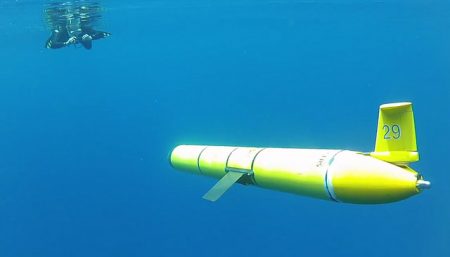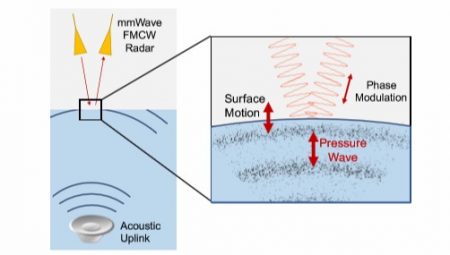September 1, 2018 – Besides the obvious military application of underwater to air data transmission, the growing array of ocean sensors that include both floating and underwater gliders. Gathering data from the floaters is not a problem since communication is air-to-air. But continuous real-time data communications from underwater gliders equipped with sensors requires these devices to surface to share data findings.
Global Ocean Observations is a partnership between the National Oceanic and Atmospheric Administration (NOAA) of the United States, the Caribbean Coastal Ocean Observing System (CARICOOS), Autoridad Nacional de Asuntos Maritimos of the Dominican Republic, and the universities of Miami and Puerto Rico. The research they do involves targeted observations of the thermal structure of ocean water from the Atlantic Ocean off Africa to the Caribbean Sea. This area of open water is the birthplace of hurricanes that strike North America’s eastern shores. Gathering data in realtime can be critical in understanding the thermodynamics within a water column that becomes the source of energy to drive a hurricane’s destructive winds.
In hurricane season from June through November, the realtime sharing of data can make a difference in the lives of people living on a hurricane’s path taking the guesswork out of understanding the force within the storm. Global Ocean Observations operates a number of technologies to gather ocean data. These include ARGO, the 3,800 floating data sensors spread around the globe. But specifically, for underwater observations, the project has commissioned four undersea gliders and has access to four U.S. Navy gliders in addition. All are deployed to measure temperature, salinity, dissolved oxygen and chlorophyll profiles in water depths from 400 meters (approximately 1,300 feet) to the surface. The gliders constantly ascend and descend with communications and data sharing only possible upon surfacing.

So much for why this latest Massachusetts Institute of Technology (MIT) invention can best serve the planet for peaceful purposes. The far more obvious application is submarine-to-airplane communications.
At the SIGCOMM conference in Budapest last week, MIT researchers presented a paper entitled, “Networking across Boundaries: Enabling Wireless Communication through the Water-Air Interface,” in which they described the technology they call translational acoustic-RF communication (TARF).
Still in its preliminary stages, TARF deploys an underwater acoustic transmitter to send sonar signals that upon reaching the surface of the ocean create tiny waves a few micrometers in height, each corresponding to the frequencies of the transmission.
Onboard receivers in the air using high-frequency radar interpret the waves and process them turning them into readable transmissions between 30 and 300 Gigahertz, corresponding with the spectrum to be used by 5G wireless networks.
It is described as being equivalent to listening to a whisper from very far away. The technology uses sophisticated software algorithms to separate the noise of natural waves from the transmission waves detected which allows for accurate decoding of the communication.
In testing, TARF has accurately decoded a variety of data transmissions including voice communications at rates of hundreds of data bits per second.
TARF works well in calm water, even with swimmers on the surface directly above the transmission source. But what still needs to be perfected is the technology’s ability to capture transmissions in rougher water with waves higher than 16 centimeters (a half-foot).
States Aaron Schulman, Assistant Professor, Computer Science and Engineering, University of California at San Diego, “TARF is the first system that demonstrates that it is feasible to receive underwater acoustic transmissions from the air using radar…. I expect this new radar-acoustic technology will benefit researchers in fields that depend on underwater acoustics (for example, marine biology), and will inspire the scientific community to investigate how to make radar-acoustic links practical and robust.”
















